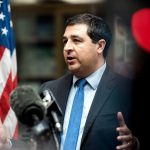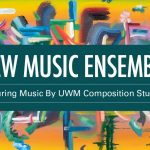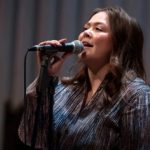The Bel Canto’s sacred “Christmas in the Basilica”
The Bel Canto Chorus celebrated at the Basilica of St. Josaphat over the weekend.
Back in my student days, I attended a Christmas concert at the Basilica of St. Josaphat. Such events were rare, then, and I wondered why more groups didn’t perform at this unique church, with its distinctive silhouette and copper-clad dome. Since then, musical Milwaukee has discovered the basilica and music often rings in that dome.
(Editor’s note: The series opened Saturday evening; additional performances begin at 3 p.m. and 6:30 p.m. Sunday, Dec. 9. The 3 p.m. concert is SOLD OUT, but tickets remain for 6:30. Ticket info here.)
Hynson, in the tradition of the King’s College Lessons and Carols, began with a solo boy singing “Once in Royal David’s City” from the back of the basilica. The rest of the Boy Choir joined him and they processed up the aisle, followed by the Bel Canto Choir, all perfectly matched in style and dynamic. The boys then sang Ed Lojeski’s blend of “Ding Dong Merrily on High” and “Good King Wenceslaus” in a very effective manner.
The Stained Glass Brass offered Giovanni Gabrieli’s Sonata Pian e forte. Gabrieli, long associated with the cathedral in Venice, frequently placed ensembles in different parts of the room to make space an integral part of the music. That approach fits the basilica. Sipe divided the brass on opposite sides of the choir to achieve the stereo effect so necessary for this piece.
In “A Spotless Rose,” the choir and soloist Jonathan Laabs captured the character the music of British composer Herbert Howells. It sits somewhere between the Edwardian pomp of Elgar and his contemporaries and the more modern idiom of Benjamin Britten. The Boy Choir followed with Gustav Holst’s “Personent Hodie” and Hynson’s own setting of Christina Rossetti’s “Love Came Down at Christmas.” Then came Sipe’s arrangement of the “Coventry Carol,” a rather dark tune from a 16th-century Mystery play. All were beautifully and expertly performed.
Before a sing-along “The First Nowell” ended the first half, the chorus sang “Welcome All Wonders!” by Illinois native and long-time National Cathedral Choir Master Richard Wayne Dirksen. Dirksen frequently employs mixed and irregular meters and unexpected syncopation. The performers navigated these intricacies with skill, although at times the acoustics of the basilica blurred some of the detail.
John Rutter’s “Gloria,” on the text from the Roman Catholic mass, opened the second half. Choirs and choir directors love Rutter’s music; he has an ample gift for melody and writes very well for the voice. The “Gloria” seemed exciting enough, and I have no doubt it got an excellent performance. But I’m not sure it was ideal for the basilica. From where I was seated, the detail disappeared a wash of sound as the long decay under the dome caused sounds to overlap. The room also seemed to amplify the brass but not the voices, which at one point in the second movement disappeared under the power of the brass. I would be interested in hearing the “Gloria” again in a drier, smaller room.
The pieces that followed better fit the basilica. John Tavener’s “The Lamb” hit a perfect blend of wonder and mystery, recalling the text from the Christmas Matins Service: “O great mystery and wonderful sacrament, that animals should see the new-born Lord lying in a manger.” The Stained Glass brass performed Sipe’s arrangement of “O Come O Come Emmanuel,” the Boy Choir did Douglas Walczak’s “Balulalow,” and all joined in Michelle Hynson’s lush arrangement of “Silent Night.” All were beautifully performed. The audience joined in to end the evening with “Joy to the World.”





















